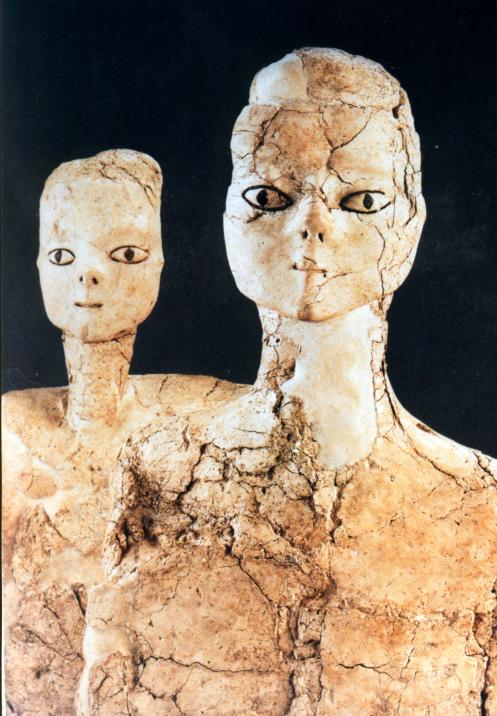For the first time, the aspect of saving World Cultural Heritage was presented within the framework of this exhibition, which focused on examples of conservation measures, taken from all of the Mediterranean countries. The projects showed exemplary solutions and opened up new perspectives on future international cooperation prospects, centering around the conservation of cultural properties.
The Exhibition
The "Bildsegler" ("floating sails"), a spacious installation by the Munich artists Armin Saub and Heinz Weld, formed the prelude to and the center of the preparatory room, demonstrating, in a remarkable way, the meaning of international communications. On interactive terminals, the visitors were able to gain an overview of the variety of cultural possessions of the Mediterranean countries. The results of the work of the European Union's Euromed Heritage Program as well as those of the non-centralized project for EXPO 2000, "World Cultural Heritage - A Global Challenge", were introduced to the public.
Germany, the host, began the exhibition with its project in the central room, presenting splendid stained glass from the Johanniskirche (St. John's Church) in Saalfeld. The Mediterranean countries' presentations ranged from the Paleolithic rock engravings of Côa in Portugal to the Tunisian palace of Baron d'Erlanger in Sidi Bou Saïd, which was erected in the early 20th century.
Notable monuments such as the famous "Hypogeum" in Malta, the Dead Sea Scrolls from Qumran in Israel and the frescoes of Assisi, damaged by an earthquake, were presented as examples of current conservation techniques. The methods were illustrated both by precious originals and by valuable replicas. The most extraordinary lime mortar statues of Ain Ghazal in Jordan, dating from the seventh millennium BC, constituted the culminating point of the exhibition.
An extensive, multilingual catalogue was published for this exhibition.
The concept for this exhibition was developed during two conferences, which were jointly organized by the Hornemann Institute and the city of Hildesheim. One of these took place from 10 to 13 February 1999 in Valletta / Malta, the other from 9 to 14 June 1999 in Hildesheim.
The organizers were the European Union and the city of Hildesheim together with the Hornemann Institute.
After that, the exhibition could be seen from June to October 2000 in the Roemer- und Pelizaeus-Museum in Hildesheim, it went on a tour through the involved partner countries from September 2001 to November 2002.


